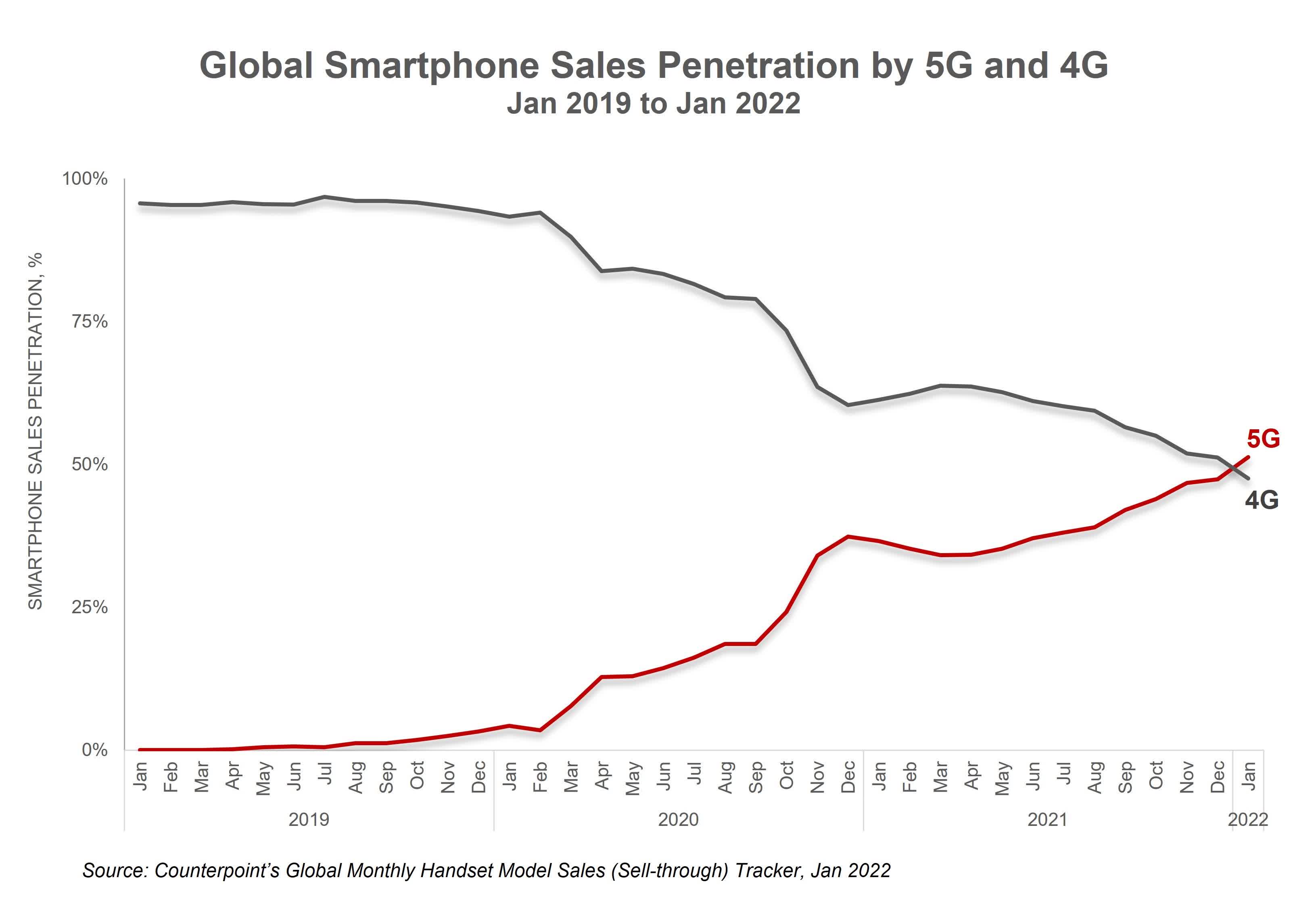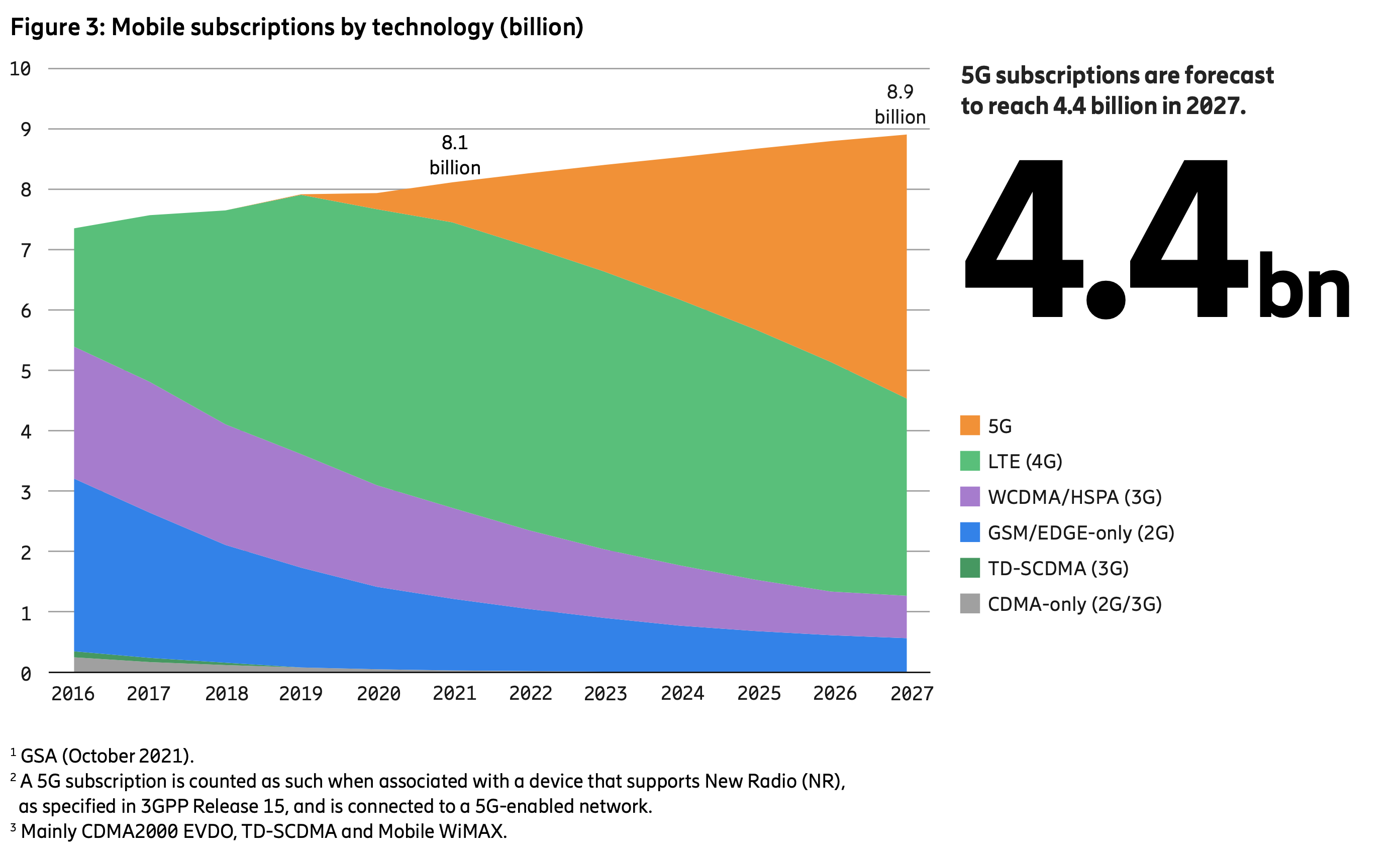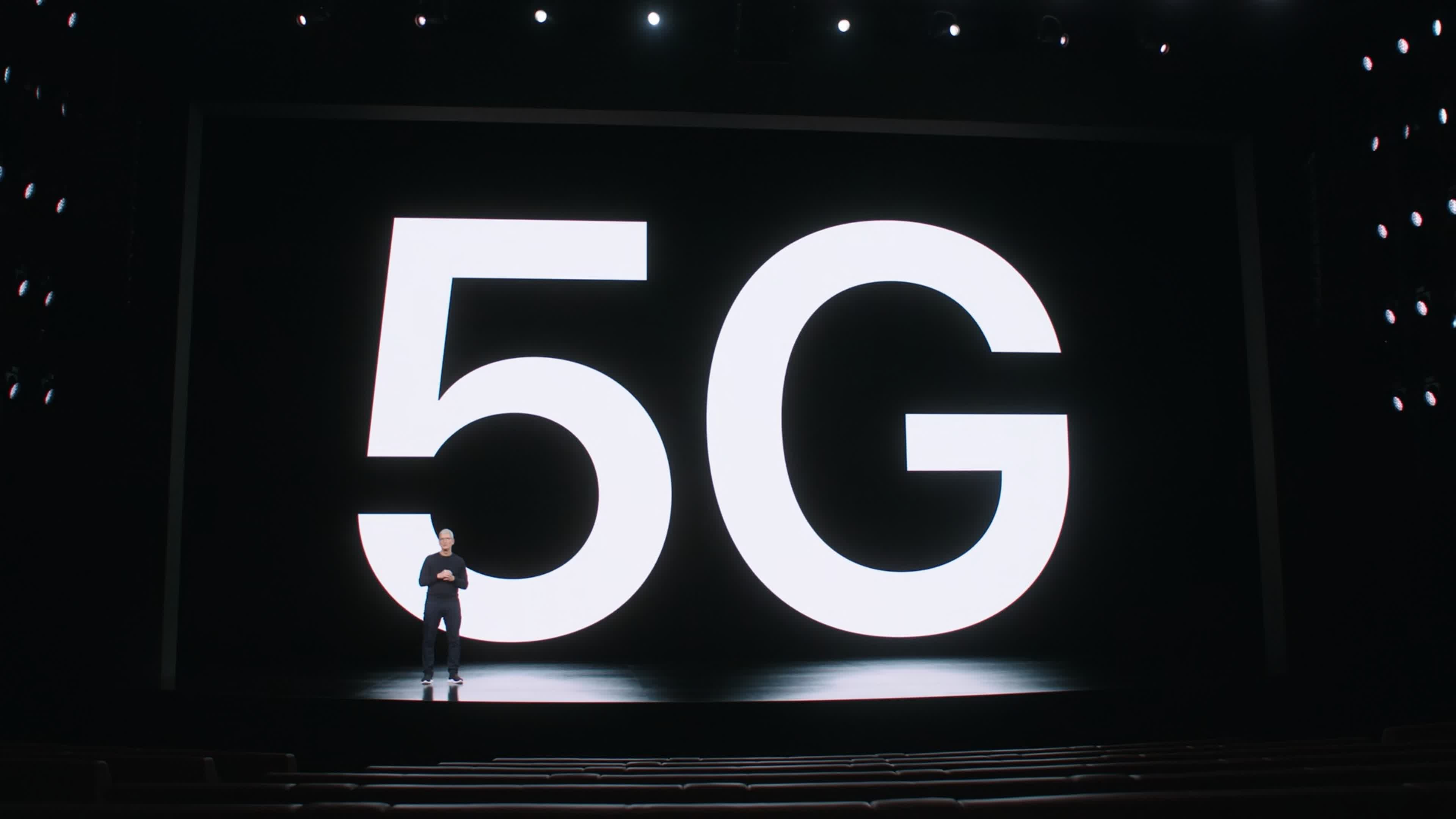In brief: The number of 5G base stations is increasing, and so is the number of handsets that support 5G signals. Apple's brand force was the highest in pushing for 5G adoption, followed by Samsung and the top three Chinese smartphone brands. At this rate, the number of 5G subscriptions could reach 4.4 billion within the next five years.
January 2022 was the first month since the introduction of 5G when sales of 5G-enabled smartphones surpassed those of 4G-capable models. According to the latest market report from Counterpoint Research, a lot of that growth can be attributed to the iPhone.
An estimated 51 percent of the handsets sold globally in January this year had a 5G modem inside, and the biggest growth was observed in China, Western Europe, and North America. China is a particularly bright spot for 5G, with a market penetration of 84 percent. Analysts believe this is due to a combination of aggressive 5G deployments by Chinese carriers (1.4 million base stations as of writing this), as well as a large supply of 5G handsets at a variety of price points.

North America and Western Europe saw penetration rates of 73 percent and 76 percent, respectively. In North America, Apple's 5G iPhones accounted for over 50 percent of overall sales, despite the company being late to the 5G party. Now that the iPhone SE also features 5G connectivity, this figure looks set to increase in the coming months.
Counterpoint notes that in the case of Android 5G phones, the most popular models are in the $250 to $400 price range. In Asia and Latin America, a new wave of 5G handsets that are in the $150 to $200 price range accounted for around one fifth of total 5G sales.
Samsung leads the pack of Android OEMs with a 12 percent share of the global market, followed by Xiaomi, Vivo, and Oppo with 10-11 percent shares. Meanwhile, Apple's 5G iPhones make up 37 percent of global 5G sales.

In its 2021 Mobility Report, telecommunications giant Ericsson estimated that there are now over 5.5 billion smartphone users in the world, and mobile networks carry 300 times more data traffic than they did 10 years ago – a whopping 65 exabytes per month.
